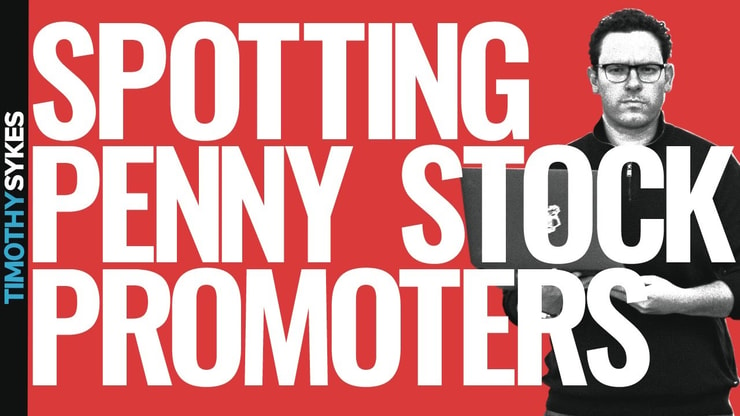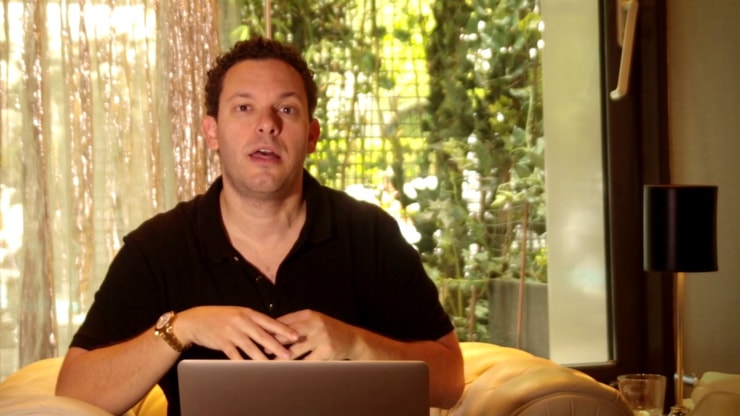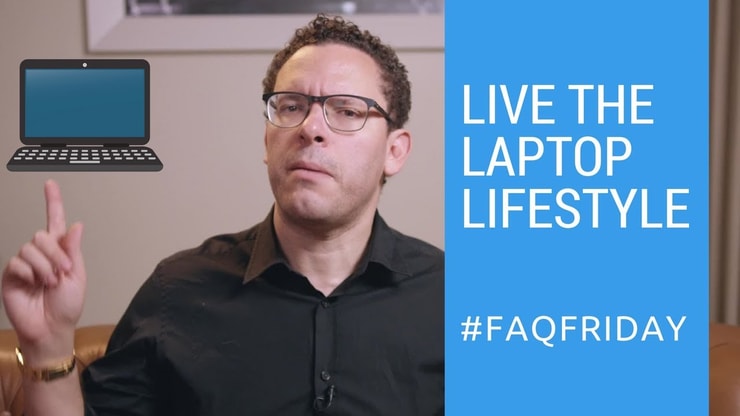In 2020, odds are you’ve heard of day trading … but do you know how to day trade? The industry has become pretty mainstream lately, but what is it?
Here’s the quick definition: day trading is when a trader buys and sells a stock in the same day — hopefully for a profit.
So what should you know about day trading? First, you can start with a small account and grow it with the right rules and strategies. Small gains can add up with smart trading and solid risk management.
I’ve made $6 million in profits from trading penny stocks. Now I teach others how to day trade. I have several six- and seven-figure students.
So I firmly believe that with the right trading education, you can find opportunities in any market.
Let’s take a thorough look at how to day trade and what you need to know before you dive in!
(*Please note: My results, along with the results of my top students, are far from typical. Individual results will vary. Most traders lose money. My top students and I have the benefit of many years of hard work and dedication. Trading is inherently risky. Do your due diligence and never risk more than you can afford to lose.)
Table of Contents
- 1 How to Day Trade
- 2 Should You Start Day Trading?
- 3 What Is the PDT rule?
- 4 What Makes Day Trading So Difficult?
- 5 Day Trading Strategies
- 6 How to Day Trade For a Living
- 7 Bonus Tip: Two Top Day Trading Books for Beginners
- 8 Apply for My Trading Challenge
- 9 Frequently Asked Questions About How to Day Trade
- 10 The Bottom Line
How to Day Trade
If you want to day trade, you gotta be ready for action. With this strategy, you often have to react in a split second. It requires a psychological resilience you can’t learn from a ‘walk-away’ strategy like investing.
The movements can happen FAST. If you aren’t on top of your game, you can say goodbye to your money.
But it’s a better time than ever to learn how to day trade. You’ll still need to study your butt off, but you can work to reduce your learning curve by focusing on your education.
When it comes to day trading, you get out what you put in. Make sure you choose the right software, broker, and charts for your needs.
Now let’s talk about where to begin…
Develop a Trading Plan
The first step for any trading strategy is to have a trading plan. This is especially true for day trading!
Having a trading plan means:
- You know exactly which stocks you should watch
- You have your go-to patterns and setups
- You have a process for orders
- You know to get out if you’re wrong
- And much more…
Creating a plan can be a grind, but you must do it. If you trade without a plan, you’re gambling.
And before you do any of that, get into the right mindset:
The Best Times to Day Trade the Stock Market
Not all times of the trading day bring the same opportunities for day traders. Generally, there’s a flurry of activity in the first hour or two after the market opens.
The middle of the day is usually sleepy. Then as the final hour of the trading day approaches, volume and volatility often pick up as traders try to deal with their positions before the close.
Since day traders need volatility to profit, most trades happen either right after the open or within the closing hour.
This is another reason why your plan is so important. It can all come down to a small window of time. You must be prepared to act.
Struggling to trade the volatile 2020 markets? Get my no-cost “Volatility Survival Guide.” It can help you through this insane market and any volatility you may hit down the road.
Types of Stocks You Can Day Trade
Choosing the best types of stocks to trade in the face of so many options can be confusing. There are different sectors, market caps, and opportunities. How can we break it all down? Here’s a start…
S&P 500 Stocks
The S&P 500 stocks are the 500 largest companies traded on the New York Stock Exchange (NYSE) and Nasdaq. These are companies like Microsoft, Ford, Netflix, and Amazon.
The trading volume, or liquidity, in most of these stocks every day is enormous — most traders rarely have trouble getting an order filled. But there’s a catch.
When you trade these stocks, you’re competing with the wealthy big dogs of the market. Your competition includes some of the world’s top traders, hedge funds, and trading firms.
And these stocks aren’t as volatile as smaller companies. It takes some pretty extreme circumstances to make them move a lot in a day.
Thankfully, for traders like me, there are more options…
High Volume Penny Stocks
A stock’s volume is determined by the number of shares traded during the course of a day — both buying and selling. The higher the amount of activity in either direction, the higher the volume of a given stock.
If you look at a list of top daily percent gainers, guess what you’d see … penny stocks!
Penny stocks are small companies, typically trading for less than $5 per share. The companies themselves are often junk. But since they’re so small, a single news story or rumor can send prices skyrocketing or collapsing.
It can sound scary, but if you know what you’re doing and what to look for, you can trade penny stocks and build a small account.
You can learn to use the volatility of these stocks to your advantage.
Penny stocks don’t trade like large-caps. Your competition in penny stocks tends to be a lot of uneducated traders. That’s why they can be great trading opportunities!
But not all penny stocks are right for day trading.
Many of these tiny companies have barely any trading volume each day — no one’s there buying and selling throughout the session.
So you can get stuck in trade with these stocks. Stick to high volume penny stocks.
More Breaking News
- Olo Stock Soars as Red Lobster Relaunches Partnership
- Is Circle Internet Group Undervalued?
- Lucid Group Strengthens EV Supply Chain with New Graphite Deal
Knowing How to Work Your Orders Is So Important
When you make a long-term trade, you can place a buy order at $5, your stop loss at $4 … and walk away. You could feel pretty confident in your trading plan. Even if you mess up by a few cents on a few orders, the math generally works.
This isn’t the case with day trading. You’re looking for intraday moves. This strategy has thinner margins, meaning timing is everything.
Say you buy a stock at $5 with your stop loss at $4.90. You have a profit target of $5.30 later in the day. If you consistently miss the order entry you need for a good risk/reward ratio, you can turn your strategy into a break-even or losing one.
That’s why it’s so important to know how to day trade, what you want to buy and sell, and at which prices. You also need to know which order types work for you. And you need to do it all before the market gets anywhere near those prices.
New to penny stocks? Get my FREE online guide here.
Should You Start Day Trading?
If you’re thinking of learning how to day trade, be ready to work. If you’re a slacker, you may not make the cut.
But if you’re serious, dedicated, and committed to learning the process, day trading can change your life. It can give you the chance to live on your own terms. You can do this job from almost anywhere.
I’ve been trading for over 20 years and teaching for over 10. I’ve made $6 million in trading profits.* Trading penny stocks allowed me to grow a small account and find financial freedom. Now I donate all my profits to charity and love to trade all over the world!
My upcoming student Matthew Monaco helped me put together my newest program for traders of all levels. You can read how it helped Matt here. Once you understand the true value of education, you’ll see how ridiculously low-priced this program is. Make a smart investment in your education with my 30-Day Bootcamp now.
What Is the PDT rule?

2025 Millionaire Media, LLCNewbie traders worry too much about the pattern day trader (PDT) rule.
This federal rule mandates that accounts under $25,000 can only make three day trades (a buy and a sell on the same day) every five business days. (That’s the short version — read more about the PDT rule here.)
I used to hate this rule. Now I see it as a smart way to prevent overtrading.
And overtrading is a fast road to blowing up your account. Start with the process and worry about the money later.
What Makes Day Trading So Difficult?

2025 Millionaire Media, LLCIt’s different for every trader. Some have a hard time finding a strategy. Others struggle to control their emotions while in trades.
Also, it’s easy to make the mistake of overtrading. When it comes to day trading, less is more. Quality over quantity.
It all comes down to your education and dedication. It requires a ton of work. But my top students get how valuable a trading education is.
Day Trading Strategies
- Be happy to take small losses. And never let a small loss turn into a big one! If you keep them small, it’s easier to let your winning trades stack up.
- As you learn how to day trade, start small until you have confidence in your strategy.
- Don’t use leverage — it can kill trading accounts. You don’t need it. Don’t get greedy!
- Only trade stocks with volume that are moving. Anything else is a waste of time and money.
Technical Analysis and Chart Patterns
If you decide to trade longer term, you gotta be up to date on a company’s fundamentals. This includes balance sheets, earnings, sales, debt…
But day traders rely more on technical analysis. Here’s why …
Day trading relies on rapid price movement within the day. Basically, a bunch of traders pile into or out of a stock, pushing the price up or down. That’s why day traders rely on price action, chart patterns, and Level 2. These are all facets of technical analysis.
It’s more important to know where traders are buying or selling. You also want to know if prices are breaking out of all-time highs or collapsing down out of a trading range. Every trader uses technical analysis differently.
That doesn’t mean you shouldn’t understand fundamentals. Sometimes they play a role.
Finding the Best Stocks to Day Trade
Let’s say you did all the research. Now you have some patterns to trade and a watchlist of stocks. They all have potential news that could spike their prices…
What should you do?
Use the right tools for the job. No big surprise, I use StocksToTrade every day. I helped design and create it for the penny stocks I love to trade.
StocksToTrade is the total package for scanning, news feeds, charting, watchlists, and much more. And its new Breaking News Chat add-on feature is changing everything. 2020 has been a big year for my trading.* And I owe a lot to the StocksToTrade Breaking News team. Check it out:
The Importance of Using Risk Management and Stop-Loss Orders
You will have losing trades. Anyone who claims they can teach you how to never lose is full of crap.
The only person who can manage your risk properly is you. There’s no ‘guru’ who can do it for you.
Managing your risk means cutting losses quickly. It’s my #1 rule. You want to keep your losses smaller than your wins. That’s how you grow a small account.
You can use a stop-loss order to manage risk. With this order type, you can set an exit at a certain price if the trade goes bad. I prefer to use a mental stop. I set an exit price mentally and stick to it if my plan fails. Mental stops make me pay attention to the trade. I think that’s key in day trading these volatile stocks.
Whatever helps you stick to your plan and cut losses quickly, do it every time.
Best Broker For Day Trading
Throughout my career, I’ve used dozens of brokers. Keep in mind I have 20+ years of experience in this industry. Not all brokers are the same.
I like brokers with lots of capital backing — and they must be insured by the FDIC. Never use some cheap offshore broker. They can rob you as soon as you deposit.
Find a broker that fits your needs. Here are a few examples:
TD Ameritrade
TD Ameritrade can be a great broker if you’re new and learning. It’s one of the most well-known brokers with the credibility that comes with a big name.
It offers paper trading, no minimum account requirement, and no platform fees.
E-TRADE
I’ve used E-Trade a lot. It’s one of the brokers that I think sucks the least. It can be a good choice for day traders with smaller accounts. Its commission rates are similar to TD Ameritrade, but it has a slightly easier to use interface.
Read more about the brokers I use here and check out this video:
Never Stop Learning
I don’t care what your strategy is. You must constantly learn and adapt. Especially in day trading.
In the old days, there was little information available to traders. If you wanted to learn how to trade back then, you had to do it the hard way.
I want to make trading more accessible to aspiring traders. That’s why I released my 30-Day Bootcamp. In just one month you can work to start building a solid trading foundation. Get into the 30-Day Bootcamp now!
How to Day Trade For a Living

2025 Millionaire Media, LLCIf you want it bad enough, you can make it happen. Trading is not a regular 9-to-5 job. There can be a lot of freedom with it, but you gotta earn it.
You can make a living from day trading if you’re willing to put in the time. That can mean months or years of effort. My top students all studied for years to hit their big milestones. Don’t ever look at someone’s profits and think they came easy.
Study constantly, learn the patterns, prepare for anything, and always cut losses quickly!
Bonus Tip: Two Top Day Trading Books for Beginners
“The Complete Penny Stock Course”
My student Jamil compiled all my top trading lessons together and put them into this book. I wrote the forward. Read “The Complete Penny Stock Course” to learn all the strategies that I’ve used to make millions trading penny stocks.* These are the same strategies that my top students used to become self-sufficient.
You’ll also learn about trading psychology, patterns, and how to better understand the market. I recommend all day traders keep this book on hand. (And you get it as a bonus when you get into the 30-Day Bootcamp.)
“An American Hedge Fund”
I wrote “An American Hedge Fund” to share my trading journey with the world. You can read it to learn how I turned about $12,000 of bar mitzvah money into millions. You’ll also get to hear about my experience managing a hedge fund — and how that inspired me to teach trading.
My career has been a wild ride. You can learn a lot from my journey, including the mistakes I made along the way. Hopefully, it can help you avoid them.
Apply for My Trading Challenge
If you’re determined to never stop improving, check out my Trading Challenge. You have to apply — I only accept the most dedicated students. If you’re looking to get rich quick, look somewhere else.
I share all my trades, and the plans behind them, every day in the chat room. Being transparent helps my students learn from wins and losses. I’m proud to be real in an industry of fakes.
Everything I’ve learned in 20+ years of trading is put into this challenge. You’ll have the opportunity to learn from me, my top students, and your peers. This is an amazing opportunity for day traders.
Apply today and dedicate yourself to learning the process now!
Frequently Asked Questions About How to Day Trade

2025 Millionaire Media, LLCHow Do I Teach Myself How to Day Trade?
You can try to teach yourself how to day trade, but it’ll be very difficult. Find a mentor who’s transparent and has been in the industry for a long time. I’m passionate about teaching trading. And in over 20 years, I’ve seen a lot. Take advantage of the learning opportunities you have available!
How Much Money Do You Need to Day Trade?
Most people think you need thousands of dollars to day trade ... this isn’t true. Experienced traders use bigger accounts — but if you’re new to trading, you don’t need much money. I recommend starting with a small account to practice and gain experience.
Can You Day Trade With $500?
Yep, you can day trade with a small account. Remember to keep your losses in check and focus on the process. When you feel comfortable, and you’re able, you can add to your account slowly.
Can You Day Trade with $1,000?
Some of my top students started with small accounts and grew them over time. It won’t happen overnight, so don’t focus on the money. Instead, grow your knowledge account first. Build a solid base of education. When you start taking trades, keep your positions small until you find consistency.
The Bottom Line
We covered a ton of great info on how to day trade, and the steps you can take to start learning today. If you have the discipline and focus, the laptop lifestyle is possible.
Don’t be lazy! Learn as much as possible before risking your hard-earned money.
Find the right tools for your trading style, and get comfortable with your broker’s software. You can start risk-free with paper trading. It’s a smart way to learn without risking a cent.
Learn from traders who you aspire to trade like one day. Keep a trading journal to help you learn from your mistakes. Study up, cut losses quickly, and never give up!
What do you think matters most when learning how to day trade? Leave a comment below and let me know!













Leave a reply